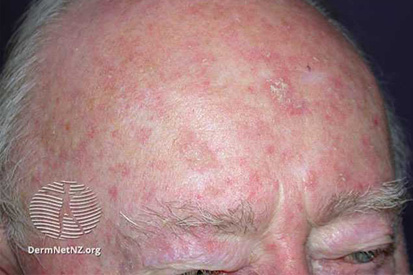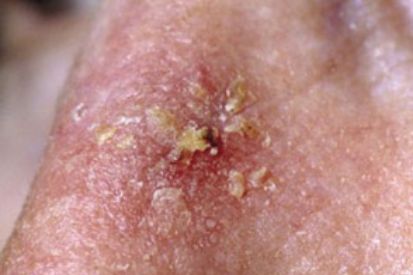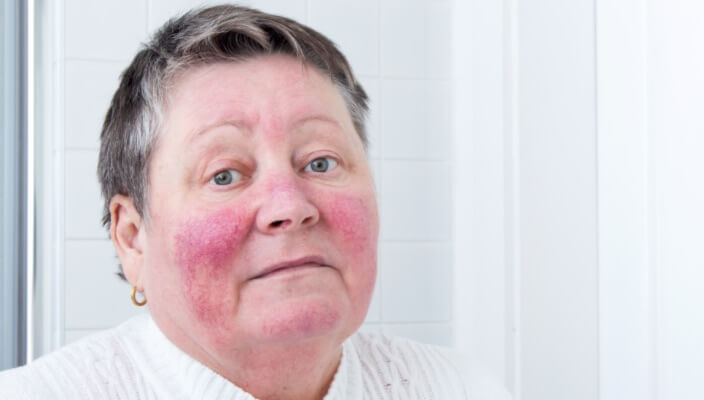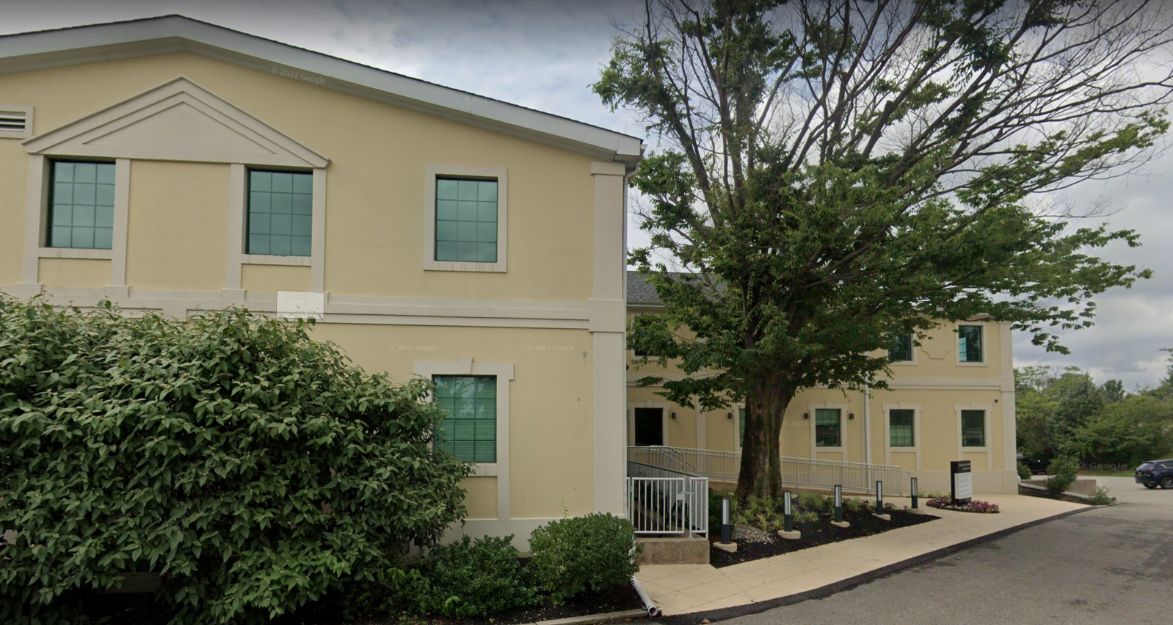Actinic Keratosis
Understanding Actinic Keratosis and Its Risks
Actinic Keratosis presents as rough, scaly patches on the skin, typically developing in areas that have experienced extensive sun exposure. These lesions are most commonly found on the face, ears, neck, lips, forearms, and the backs of the hands.
Individuals with a light complexion, blonde or red hair, blue or green eyes, and a history of significant sun exposure are at a higher risk for Actinic Keratosis. People who spend a lot of time outdoors are also more susceptible. This condition is most frequently seen in individuals aged forty and older.
Actinic Keratosis is considered a precancerous skin condition and requires treatment by a dermatologist. Regular visits to the experts at Keystone Dermatology Partners can help prevent Actinic Keratosis from progressing to more severe skin conditions. Early detection and treatment are essential for effective management.
At Keystone Dermatology Partners, your skin’s health and well-being are our top priorities. Our team of experienced professionals provides comprehensive care and preventive strategies to address Actinic Keratosis. Through consistent monitoring and treatment, we aim to prevent the development of more serious skin concerns. Rely on our skilled dermatologists to support you throughout your skin health journey, ensuring you receive the highest standard of care and achieve the best possible outcomes.
Schedule an appointment online for a skin exam today.
Examples Actinic-Keratosis



Symptoms of Actinic Keratosis
- Form on the parts of the body most exposed to the sun
- Appear on the hands, arms, face, scalp, and neck
- Thick, scaly, and crusty patches on the skin
- Brown, tan, gray, or pink coloration
- Burning or itchy feeling
Causes of Actinic Keratosis
- Natural consequence of aging
- Excessive sun exposure over time
- HPV virus
- Weakened immune system
- Fair skin, red or blond hair, and blue eyes
How Can Actinic Keratosis Be Prevented?
- Avoid the sun during midday.
- Use a sunscreen of at least SPF 30. Make sure the sunscreen targets both UVA and UVB rays.
- Wear hats and sunglasses, and cover your body when exposed to direct sunlight.
- Avoid artificial tanning using tanning beds.
Actinic Keratosis - Frequently Asked Questions
Actinic Keratosis lesions are typically not painful, and many people may not experience any discomfort. However, some individuals may notice tenderness, itching, or a burning sensation in the affected areas.
Actinic Keratosis does not typically resolve on its own. Without treatment, these precancerous lesions have the potential to progress to squamous cell carcinoma, a type of skin cancer. Therefore, it is crucial to seek medical attention if you suspect you have Actinic Keratosis. Your dermatologist can assess the lesions, recommend appropriate treatments, and monitor your skin for any signs of progression.
Your dermatologist can diagnose Actinic Keratosis through a visual examination of the skin. In some cases, a biopsy may be performed to confirm the diagnosis or rule out skin cancer.
You should use sunscreen every day, even on cloudy days and during the winter, UV rays can still penetrate the clouds and cause skin damage.
From Our QualDerm Family of Providers: Sunscreen Recommendations
How Can Actinic Keratosis Be Treated?
- Excision: The lesion may be removed from the skin using a scalpel.
- Cauterization: the lesion is burned with an electric current.
- Cryotherapy: the lesion is treated with liquid nitrogen or another cryosurgery solution that freezes the cells. After treatment, the area will simply scab and fall off.
- Topical Medical Therapy: Actinic keratosis may be treated with topical treatments like 5-fluorouracil or imiquimod and ingenol mebutate.
- Phototherapy: a solution is applied over the area and exposed to laser light, which kills the cells. The prescription medications used in phototherapy include aminolevulinic acid and methyl aminolevulinate cream. If phototherapy is chosen, it will be referred out.
To avoid the recurrence of actinic keratosis, it is best to avoid further sun damage and exposure to UV rays. Only 10% of actinic keratosis spots develop into skin cancer. However, it is advisable to check for any abnormal growths around the face, neck, ears, arms, and hands as a preventive technique.
Related Blogs

- Skin Cancer
- Sun Safety
When it comes to sunscreen, does a bigger (higher) SPF number mean its better than one with a smaller one? Discover the effectiveness of your sunscreen and what SPF you should be applying.
Read More
- General Dermatology
- Skin Care
Rosacea is a common skin condition characterized by facial redness and pimples. A recent study suggests that drinking caffeinated coffee may reduce the risk of developing rosacea, highlighting a potential benefit of coffee consumption.
Read More
- Skin Cancer
- General Dermatology
- Sun Safety
Use this blog as a guide to help you choose the most effective sunscreen to protect your skin.
Read More

